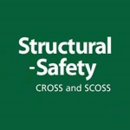Structures at the end of their design life
Design life varies according to the type and use of a structure. A structure should retain fitness for purpose as it approaches and passes its design life or changes use.
Much of our small scale built environment was developed without a defined service life. The structure, services and finishes are likely to have been upgraded progressively without disproportionate cost and with limited regulation.
For major public infrastructure and industrial/commercial structures a design life will have been specified in the design brief but changes in loading and use will have often required upgrades long before the design life has been reached. Bridges in particular have an inspection and assessment process in order to evaluate ongoing serviceability. For essential public infrastructure the consequence of closures for replacement is such that life extension, strengthening and upgrade whilst remaining in service may have to take place.
For industrial structures the economic life of the system of which the structure is a part is usually governed by the M&E equipment and the commercial viability of the production system or the resource being exploited.
For many commercial structures the structure itself is likely to have a longer economically viable life than the commercial application. M&E equipment upgrade requirements, changes in technology and changes in use can limit the economic life of a structure. The presence of hazardous materials may limit the economic viability of modifications to older low value structures to meet new commercial needs.
In pure structural terms life extension is greatly facilitated if the structure is accessible for inspection and repair and the design and fabrication information is readily available. BIM will be valuable for future life extension of new structures.
Whilst the focus in structural assessments is on the primary components of a structure consideration of secondary elements such as cladding panels and facades is also necessary because they may fail due to corrosion of fixings and decay of masonry.
Internationally, there is a need for greater awareness and regulation in some countries as there have been many structure failures arising from combinations of poor construction and maintenance and additions beyond the capability of the original structure and foundation.
We need to avoid the largely unnecessary cost and effort associated with calling for design life assessments for all structures. Major structures with inspection and maintenance programmes and those actively managed and maintained are already largely satisfactorily addressed, but would be helped by more design attention to inspection and maintenance. Industrial structures often have a short life but changes in use may not be fully covered. Domestic structures do not need it. Perhaps small scale commercial structures do.
This topic paper was issued by SCOSS in June 2015. You can view the original here.
[edit] Related articles on Designing Buildings Wiki
- Concept structural design of buildings.
- Cradle-to-grave.
- Deflection.
- De la Concorde overpass collapse.
- Decommissioning.
- Demolition.
- Design for deconstruction.
- Design life.
- Design quality for buildings.
- Detailed structural design.
- Dismantling.
- Elements of structure in buildings.
- FC Twente stadium roof collapse.
- Fitness for purpose.
- Major cast metal components.
- Span.
- Structural engineer.
- Structural steelwork.
- Structural vibration.
- Structure definition.
- The development of structural membranes.
- Urban decay.
Featured articles and news
The UK's Modern Industrial Strategy: A 10 year plan
Previous consultation criticism, current key elements and general support with some persisting reservations.
Building Safety Regulator reforms
New roles, new staff and a new fast track service pave the way for a single construction regulator.
Architectural Technologist CPDs and Communications
CIAT CPD… and how you can do it!
Cooling centres and cool spaces
Managing extreme heat in cities by directing the public to places for heat stress relief and water sources.
Winter gardens: A brief history and warm variations
Extending the season with glass in different forms and terms.
Restoring Great Yarmouth's Winter Gardens
Transforming one of the least sustainable constructions imaginable.
Construction Skills Mission Board launch sector drive
Newly formed government and industry collaboration set strategy for recruiting an additional 100,000 construction workers a year.
New Architects Code comes into effect in September 2025
ARB Architects Code of Conduct and Practice available with ongoing consultation regarding guidance.
Welsh Skills Body (Medr) launches ambitious plan
The new skills body brings together funding and regulation of tertiary education and research for the devolved nation.
Paul Gandy FCIOB announced as next CIOB President
Former Tilbury Douglas CEO takes helm.
UK Infrastructure: A 10 Year Strategy. In brief with reactions
With the National Infrastructure and Service Transformation Authority (NISTA).
Ebenezer Howard: inventor of the garden city. Book review.
The Grenfell Tower fire, eight years on
A time to pause and reflect as Dubai tower block fire reported just before anniversary.
Airtightness Topic Guide BSRIA TG 27/2025
Explaining the basics of airtightness, what it is, why it's important, when it's required and how it's carried out.
Construction contract awards hit lowest point of 2025
Plummeting for second consecutive month, intensifying concerns for housing and infrastructure goals.
Understanding Mental Health in the Built Environment 2025
Examining the state of mental health in construction, shedding light on levels of stress, anxiety and depression.






















